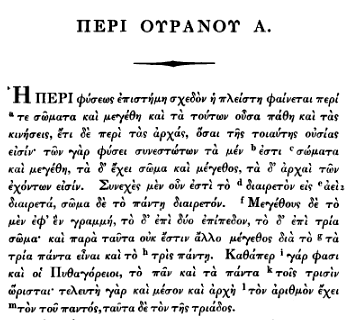
Iconicity
October 8, 2015 Mankind's greatest invention is language. Spoken language gives us the ability to exchange ideas with each other, including the important activity of teaching our children, while written language gives us the ability to convert short-term memory to long-term cultural memory. I wrote about some scientific aspects of language in two earlier articles (Proto-Tongues, February 18, 2013, and Conserved Words, September 16, 2013) |
| Both sides of the Phaistos Disk, a fired clay disk about six inches in diameter that's completely covered on each side with stamped symbols arrayed in a spiralfrom center to edge. The disk is about 3,500 years old, and it was found in the Minoan palace of Phaistos. The language, which has similarities to Linear A and Linear B, is unknown. No other examples of the Phaistos script have been found, and it's unlikely that a translation can be made, since there's no point of reference. (Photo by Maksim, via Wikimedia Commons.) |
 | The earliest science was written in Greek. Aristotle's "On the Heavens," portion of the first page of an 1837 edition. (Via Wikimedia Commons.) |
| French | chat | German | katze | |
| Italian | gatto | Norwegian | katt | |
| Swedish | katt | Polish | kot | |
| Catalan | gat | Spanish | gato | |
| Portuguese | gato | Basque | katu |
| Computer icons are the type of icon with which most people are familiar. Assorted Linux icons from the /usr/share/icons directory of my Linux desktop computer. Left to right by row, search, music, video, trash, text editor, image, dictionary, help, and web browser. |
"If you show people a novel pointy object and a novel round object, and ask them which of these is a 'kiki' and which is a 'bouba,' they are more likely to say that a pointy object is called 'kiki' and the round one is called 'bouba,' because they sound more pointy and round, respectively."[6]Most interestingly, it was found that words learned at an earlier age, the most basic words in any language, tend to be more iconic.[5] Marcus Perlman, co-lead author of the study and a postdoctoral research associate at the University of Wisconsin-Madison, makes the following observation:
"Young children face the very considerable challenge of figuring out that all these vocalizations that the people around them are making mean something, and further, that they mean very particular things... When words are iconic, the sound of the word instinctively primes its meaning, and this helps children to understand that the sound is a word with a particular meaning, and that words in general have meanings."[6]
 | Another example of iconicity in a language. English Braille code for the letter, "l." (Image created with Inkscape.) |
References:
- 'Oldest English words' identified, BBC News, February 26, 2009.
- David Brown, "Linguists identify words that have changed little in 15,000 years," The Age, May 7, 2013.
- Mark Pagel, Quentin D. Atkinson, Andreea S. Calude and Andrew Meade, "Ultraconserved words point to deep language ancestry across Eurasia," Proc. Natl. Acad. Sci., vol. 110, no. 21 (May 21, 2013), pp. 8471-8476. A copy of the open access PDF file is available, here.
- Matt Peckham, "Move Over, BabelFish: Computer Program Reconstructs Lost Tongues," Techland, Time Magazine, February 12, 2013.
- Lynn K. Perry, Marcus Perlman, and Gary Lupyan, "Iconicity in English and Spanish and Its Relation to Lexical Category and Age of Acquisition," PLoS ONE, vol. 10, no. 9 (September 4, 2015), Document no. e0137147, doi:10.1371/journal.pone.0137147. This is an open access article with a PDF file available here.
- Finding Iconicity in Spoken Languages, University of Miami Press Release, September 8, 2015.
- David Brown, "Linguists identify words that have changed little in 15,000 years," The Age, May 7, 2013.